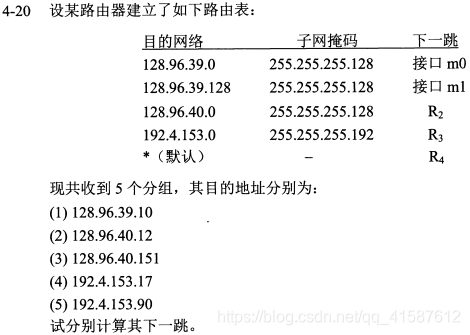
 If it helps you, remember to like and follow me!
If it helps you, remember to like and follow me!
Textbook used: Computer Networks (7th Edition) Edited by Xie Xiren answers to after-school questions, but not detailed
First-hand experience after a semester: This is a super thick, chewy book that I haven't read much. I basically finished watching the class of Wangdaoji.com at station B, but I was still very desperate.
∵Our teacher (Ph.D.) is going on a business trip to the United States, so he will take the exam in advance ∴ I have planned some after-school questions in the book, and make some changes to the exam questions (the kind that will not fail if you work hard)
The following answering process is written by the author himself, if there are any mistakes, please leave a message or private message






(1) 011011111 0 11111 0 00 (insert a 0 after every 5 1s) (2) 0001110 11111 11111 110 (remove a 0 after every 5 1s)
![]() As a result, I did not take these 4 tests, and I asked to write my full name in English & Chinese meaning, no need to write the role
As a result, I did not take these 4 tests, and I asked to write my full name in English & Chinese meaning, no need to write the role
IP (Internet Protocol) : Realize network interconnection. The disparate networks participating in the interconnection appear to be a unified network from the user's point of view. The network protocol IP is one of the two most important protocols in the TCP/IP system. The following three protocols are used in conjunction with the IP protocol.
ARP (Address Resolution Protocol) : Solve the mapping problem between the IP address and the hardware address of the host or router on the same local area network.
RARP (Reverse Address Resolution Protocol) : Solve the problem of mapping the IP address and hardware address of the host or router on the same local area network.
ICMP (Internet Control Message Protocol) : Provides error reporting and query messages to improve the chances of successful IP data delivery.
After taking the PPP (Point to Point Protocol) test, there are still 3 I can't remember. It's normal to be confused on the first question.

(1) The destination station IP address of the packet is: 128.96.39.10
Comparing with the subnet mask 255.255.255.128 to get 128.96.39.0, it can be seen that the packet is forwarded through interface 0 .
(2) The IP address of the destination station of the packet is: 128.96.40.12
①Combined with the subnet mask 255.255.255.128 to get 128.96.40.0, not equal to 128.96.39.0
②Compared with the subnet mask 255.255.255.128 to get 128.96.40.0, after checking the routing table, it can be seen that this packet is forwarded by R2 .
(3) The IP address of the destination station of the packet is: 128.96.40.151
With the subnet mask 255.255.255.128 and 128.96.40.128, the packet forwarding selects the default route and forwards through R4 .
(4) The IP address of the destination station of the packet is: 192.4.153.17
And the subnet mask 255.255.255.128 and 192.4.153.0. Comparing with the subnet mask 255.255.255.192, we get 192.4.153.0. After checking the routing table, we can see that the packet is forwarded by R3 . (The answer is right, the process is not so sure)
(5) The IP address of the destination station of the packet is: 192.4.153.90
Comparing with the subnet mask 255.255.255.192, we get 192.4.153.64. After checking the routing table, we can see that the packet forwarding selects the default route and forwards it through R4 .
 IP datagram fixed header length is 20 bytes
IP datagram fixed header length is 20 bytes

 Large area screenshots will be a bit blurry, sorry
Large area screenshots will be a bit blurry, sorry
 More detailed explanation ↓
More detailed explanation ↓
















![]()
